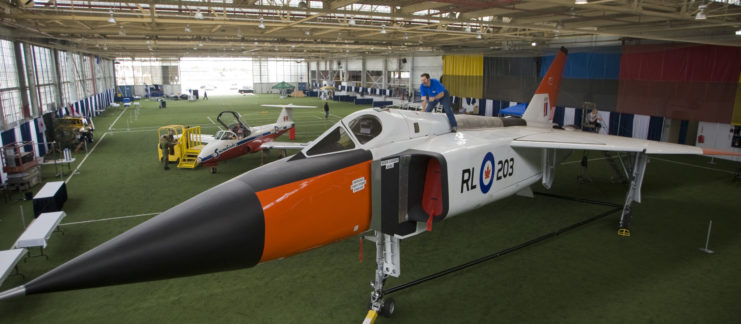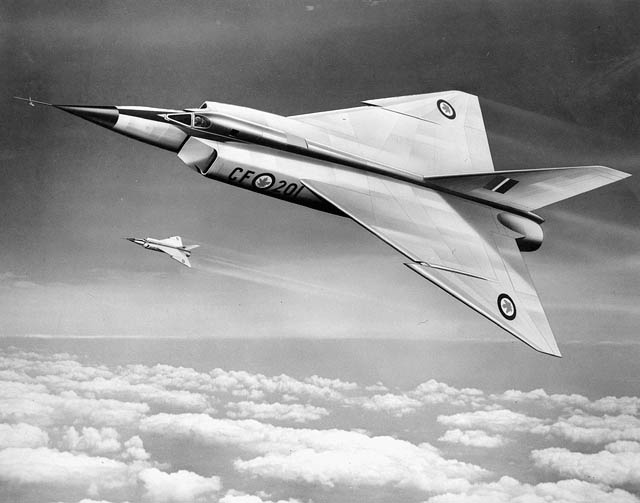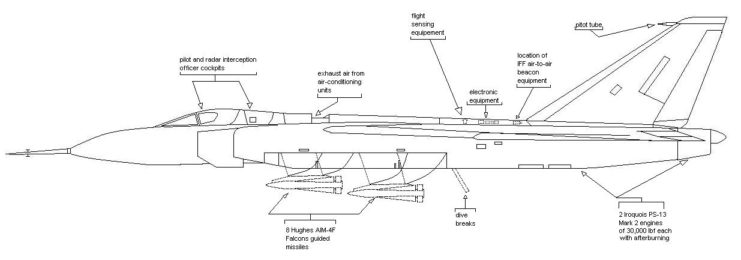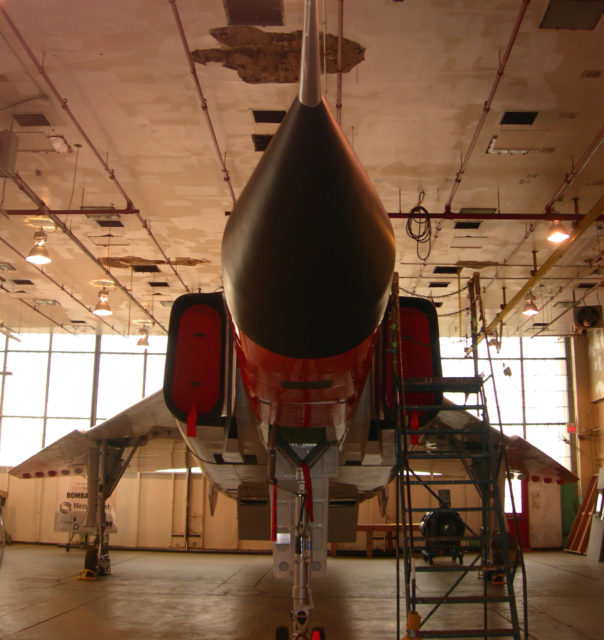The Avro Arrow: The Groundbreaking Aircraft Canada Will Never Forget
The Avro Arrow is a frustrating and tragic story about a world-class aircraft that was simply too ambitious for the nation that undertook the challenge of making it.
The aircraft spawned from the era shortly after WWII, when the West was expecting a war with the Soviets and believed an attack would come from long-range, high-altitude bombers.
They began constructing jet interceptors that could quickly reach and shoot down these incoming bombers. The Avro Arrow was Canada’s proposed interceptor.
Canada wants its own air industry
When the end of WWII was in sight, Canadian leaders started looking at the post-war future. With the nation’s large number of aircraft factories still producing models like the Spitfire and Lancaster, they saw an opportunity.

Using these factories, the country would jump-start a major aircraft industry at the dawn of the Jet Age, that designed and built airplanes in-house. They didn’t plan for this to be an ordinary industry, though, but one that produced cutting-edge aircraft that the world simply couldn’t ignore.
It was hoped that with these designs, Canada would establish itself as a major global player in military and civil markets for years to come.
One of the first companies to spawn from this plan was Avro Canada, which quickly started work on a new jet-powered interceptor, the CF-100 Canuck. This aircraft experienced delays during its development, but when it was ready, it proved to be a great aircraft, one that would continue in service until 1981. However, as an interceptor, its performance was rather lackluster from the get-go, especially against upcoming threats.
Unfortunately, the CF-100 Canuck would be the only mass-produced Canadian-designed fighter in history.
Avro had already started work on a successor before the Canuck had even entered service: the mythical Avro Arrow.
The Avro Arrow
The Arrow was to be Canada’s golden goose, its flagship, its first dive into the cutting-edge. But, as history would show us, the nation had aimed too high.

The Arrow’s requirements were given to Avro in 1953: a two-man aircraft with two engines that can cruise at Mach 1.5 at an altitude of 70,000 feet. Remember, these specifications were laid down at a point when Spitfires were cutting edge just 10 years earlier.
Avro responded to the requirements with the C105, a 24-meter-long twin-engine aircraft with an internal weapons bay and a distinct shoulder-mounted delta wing. The weapons bay was capable of carrying a variety of guided missiles and free-falling bombs.
The engines the Arrow used in testing were two Pratt & Whitney J75-P-3 turbojets, that could produce 23,500 pounds of thrust with afterburners ignited.

The proposal was so promising that in July 1953, the project, now named CF-105 was given CA$27 million in funding to continue development. Just one month later, the Soviets would detonate their first hydrogen bomb, and not long after that put the Myasishchev M-4 in the air.
These developments led to the funding for the C105 being massively increased to CA$260 million, which would pay for the construction of five Avro Arrow test aircraft, and 35 Arrow Mk. 2s with production engines and fire-control systems.
The design was thoroughly tested with scale models in the wind tunnel and with extremely advanced computer simulations. These tests resulted in a few changes, including optimizing the nose and tail cones, as well as lowering the wingtips. Titanium was used in some areas to help handle the extreme performance.
While the airframe was state-of-the-art, perhaps the most revolutionary aspect of the Arrow was the flight-control system.
The Arrow’s wings and performance meant it had to use hydraulic actuators to move the control surfaces. The hydraulics themselves were controlled by an early fly-by-wire system, which translated the pilot’s control column movements into signals sent to the hydraulics. As the control column is not physically connected to the surfaces, the pilot loses the “feel” of the aircraft, and can also overstress it by using too much force without knowing.

Avro implemented a system that relayed the control surfaces’ movements back to the control column and artificially reproduced them with actuators, returning the feel of the aircraft to the pilot. The Arrow used a high-tech Stability Augmentation System (SAS) that helped maintain the aircraft’s stability in all three axes of movement.
Avro unveiled the gleaming white Arrow to a crowd of 13,000 people in 1957 and took it for its first flight on 25 March 1958. On its third test flight, it broke the sound barrier, and by flight number seven, it passed 1000 mph. The Arrow showed brilliant flying characteristics during tests and almost reached Mach 2 (1500 mph) during a high-speed flight.
All seemed to be going great for the aircraft, which many hoped would lead Canada’s charge into the aerospace industry.
The Arrow’s cancelation
Unfortunately, while the Arrow was shaping up to be a gamechanger, the program’s massively ballooning budget, which totaled CA$1.1 billion, was becoming a game-breaker.
In mid-1957, the Liberal government was voted out in exchange for the Progressive Conservative Party, led by Prime Minister John Diefenbaker. For this new government, the virtually blank check given to the Avro Arrow was simply unacceptable. At the same time, the U.S. was offering Canada national defense equipment at a much cheaper price.

On top of this, the technology for intercontinental ballistic missiles had advanced, and people began expecting an attack to come from space instead of heavy bombers. This was further proof that the Arrow was not only too expensive, but also unnecessary.
On the 20th of February 1959, on a day that would become known as “Black Friday” in Canada, the Arrow was officially canceled. Nearly 15,000 employees at Avro and 15,000 more throughout its supply chain were instantly put out of work.
Shortly after its cancelation, Avro was ordered to destroy all plans, documents, blueprints, mock-ups, and the completed aircraft themselves. However, some parts of the Arrows were smuggled out in secret by employees, and there’s even suspicion that survives to this day that a single Avro Arrow was saved and hidden away.
More from us: These Large Planes Make Us Wonder How They Even Flew
The move essentially put an end to Avro, who were dissolved and absorbed by Hawker Siddeley Canada. Canada would eventually buy 66 McDonnell CF-101 Voodoo aircraft to do the Arrow’s work, albeit in a much less advanced way.
The aircraft has never been forgotten by Canadians, who are proud that their nation’s relatively small and inexperienced aerospace industry managed to create a truly groundbreaking aircraft.
Post a Comment
0 Comments